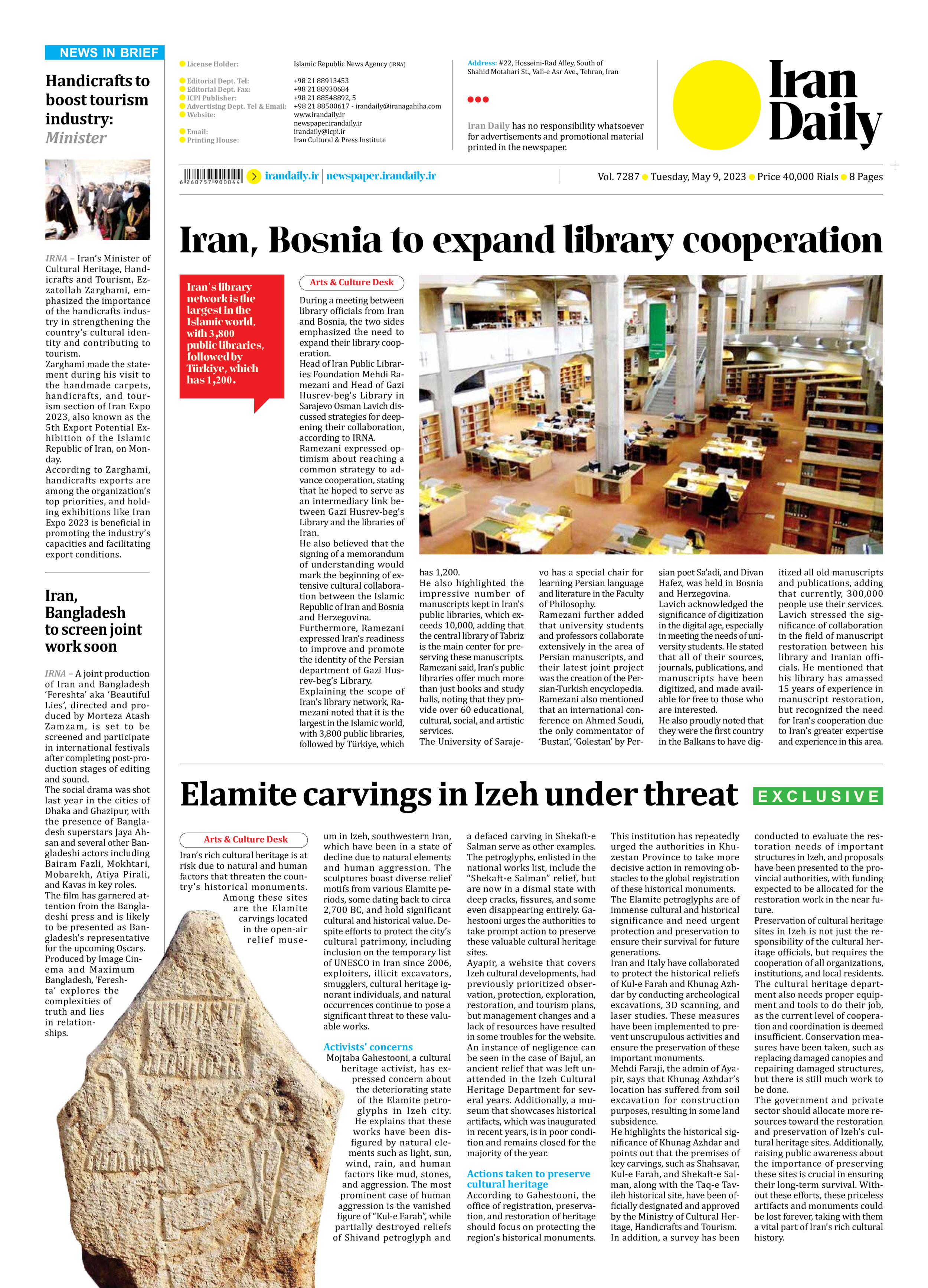
Elamite carvings in Izeh under threat
Iran’s rich cultural heritage is at risk due to natural and human factors that threaten the country’s historical monuments. Among these sites are the Elamite carvings located in the open-air relief museum in Izeh, southwestern Iran, which have been in a state of decline due to natural elements and human aggression. The sculptures boast diverse relief motifs from various Elamite periods, some dating back to circa 2,700 BC, and hold significant cultural and historical value. Despite efforts to protect the city’s cultural patrimony, including inclusion on the temporary list of UNESCO in Iran since 2006, exploiters, illicit excavators, smugglers, cultural heritage ignorant individuals, and natural occurrences continue to pose a significant threat to these valuable works.
Activists’ concerns
Mojtaba Gahestooni, a cultural heritage activist, has expressed concern about the deteriorating state of the Elamite petroglyphs in Izeh city. He explains that these works have been disfigured by natural elements such as light, sun, wind, rain, and human factors like mud, stones, and aggression. The most prominent case of human aggression is the vanished figure of “Kul-e Farah”, while partially destroyed reliefs of Shivand petroglyph and a defaced carving in Shekaft-e Salman serve as other examples.
The petroglyphs, enlisted in the national works list, include the “Shekaft-e Salman” relief, but are now in a dismal state with deep cracks, fissures, and some even disappearing entirely. Gahestooni urges the authorities to take prompt action to preserve these valuable cultural heritage sites.
Ayapir, a website that covers Izeh cultural developments, had previously prioritized observation, protection, exploration, restoration, and tourism plans, but management changes and a lack of resources have resulted in some troubles for the website.
An instance of negligence can be seen in the case of Bajul, an ancient relief that was left unattended in the Izeh Cultural Heritage Department for several years. Additionally, a museum that showcases historical artifacts, which was inaugurated in recent years, is in poor condition and remains closed for the majority of the year.
Actions taken to preserve cultural heritage
According to Gahestooni, the office of registration, preservation, and restoration of heritage should focus on protecting the region’s historical monuments. This institution has repeatedly urged the authorities in Khuzestan Province to take more decisive action in removing obstacles to the global registration of these historical monuments.
The Elamite petroglyphs are of immense cultural and historical significance and need urgent protection and preservation to ensure their survival for future generations.
Iran and Italy have collaborated to protect the historical reliefs of Kul-e Farah and Khunag Azhdar by conducting archeological excavations, 3D scanning, and laser studies. These measures have been implemented to prevent unscrupulous activities and ensure the preservation of these important monuments.
Mehdi Faraji, the admin of Ayapir, says that Khunag Azhdar’s location has suffered from soil excavation for construction purposes, resulting in some land subsidence.
He highlights the historical significance of Khunag Azhdar and points out that the premises of key carvings, such as Shahsavar, Kul-e Farah, and Shekaft-e Salman, along with the Taq-e Tavileh historical site, have been officially designated and approved by the Ministry of Cultural Heritage, Handicrafts and Tourism.
In addition, a survey has been conducted to evaluate the restoration needs of important structures in Izeh, and proposals have been presented to the provincial authorities, with funding expected to be allocated for the restoration work in the near future.
Preservation of cultural heritage sites in Izeh is not just the responsibility of the cultural heritage officials, but requires the cooperation of all organizations, institutions, and local residents. The cultural heritage department also needs proper equipment and tools to do their job, as the current level of cooperation and coordination is deemed insufficient. Conservation measures have been taken, such as replacing damaged canopies and repairing damaged structures, but there is still much work to be done.
The government and private sector should allocate more resources toward the restoration and preservation of Izeh’s cultural heritage sites. Additionally, raising public awareness about the importance of preserving these sites is crucial in ensuring their long-term survival. Without these efforts, these priceless artifacts and monuments could be lost forever, taking with them a vital part of Iran’s rich cultural history.







